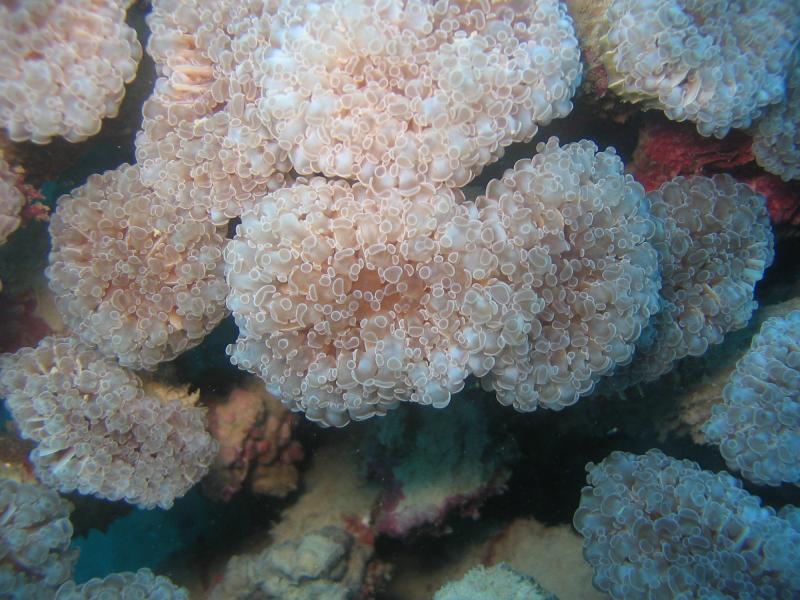Pop quiz! What’s the difference between the Pacific Islands coral species Acropora speciosa and Acropora jacquelineae? How about Isopora crateriformis and Isopora cuneata?
Don’t worry if you’re drawing a blank. These species are so similar that even experts who study and manage them have difficulty distinguishing one from the other in the field. But NOAA hopes to change that with free workshops on how to identify Indo-Pacific corals.
Through its Coral Species Identification Training Program, NOAA Fisheries is currently offering free virtual (and potentially in-person) workshops and resources that teach how to identify coral species found on Pacific Islands coral reefs. This includes the U.S. jurisdictions of American Samoa, Commonwealth of the Northern Mariana Islands, Guam, Hawaiʻi, and the Pacific Remote Island Areas (Wake Atoll). It also includes other Pacific Island nations and territories:
- Federated States of Micronesia
- Fiji
- Marshall Islands
- Nauru
- Palau
- Samoa
- Tonga
- Vanuatu
- Wallis and Futuna
The training is designed to make learning and identifying coral species as easy as possible. No prior knowledge of corals is required. “Anyone can do it,” said coral expert Dr. Douglas Fenner, a NOAA Fisheries contractor who holds the workshops. “The only requirement is that they're interested, stick to it, and practice on their own.”
NOAA wants to help raise awareness about the state of the world’s corals, so the training is open to anyone.
“People generally want to know what they’re looking at and are interested in attaching names to things,” said Dr. Lance Smith, the NOAA Fisheries coral biologist who oversees the program. “By learning more about corals, they may become more interested in the plight of corals, which is helpful for generating conservation efforts.”
NOAA is especially interested in training people who work with Indo-Pacific corals professionally for monitoring, research, or management. This will help gather data to better understand and protect corals.
The identification program has also developed coral species identification guides for the various U.S. jurisdictions, countries, and territories. Most of them are available for free. To request coral identification training, identification guides and other resources, or more information, contact either Douglas Fenner or Lance Smith.
Fulfilling a Need
The Coral Species Identification Training Program was born out of a need.
In 2014, 15 Indo-Pacific corals were listed as threatened under the Endangered Species Act. Listing the corals—the majority of which are not found in U.S. waters—provides the various species greater protection and requires the development of a recovery plan, wherein monitoring is needed to help inform their status and measure progress towards recovery. There was just one problem.
“A lot of people who work with coral reefs couldn’t identify coral species in the field,” Smith said. “There’s a tremendous need to help people identify corals beyond just shape and genus.”
There are 750 known species of Indo-Pacific corals, not including species yet to be named. “Right now, there’s an estimate that the total number of species will be three times as much,” Fenner said. “And what that really means is that for almost every coral species there’s another one that looks almost identical.”
In 2016, NOAA sponsored the development of the Field Guide to the Threatened Corals of the U.S. Pacific Islands, produced by Fenner and Dave Burdick. The guide provides photos and in-depth descriptions of each of the 15 listed species. This includes minute details that separate one species from another that closely resembles it.
The following year, Fenner held in-person trainings throughout the U.S. Pacific Islands for coral reef managers, scientists, and monitoring teams. The workshops covered how to use the guide to identify the listed corals as well as other common corals found in each archipelago.
The training, Smith explained, will ultimately help to gather data on the listed (and other) corals, including their abundance and distribution. This data is important and required for informing a species’ status and associated ESA listing classification.
The Program Expands
The U.S.–specific trainings generated a lot of interest from people across the Pacific who monitor, study, and manage corals in locations where resources are scarce. So the program expanded, and Fenner set out to photograph corals located at various Pacific Island locations, from Palau to Tonga.
While you can find photos of many of the coral species online, having site-specific photographs is important. That’s because a single coral species may look slightly different depending on its location.
Fenner then developed and held workshops, and produced their associated field guides, for identifying corals in the other Pacific Island nations and territories. The program is open to conducting workshops in more Pacific locations upon request. To do so, Fenner would have to first photograph the local coral species and build a coral identification guide.
“We also want to encourage the casual hobbyist as well as the seasoned professional to communicate with us,” Smith said. “If people have a specific question about the identification of a live coral colony or a coral skeleton that they have a photo of, we’d like them to get in touch with us directly.”





